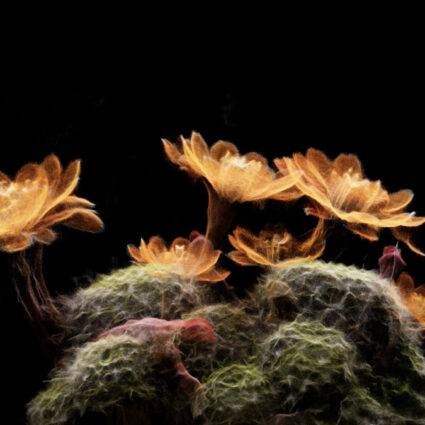Stakeholders reflect on the removal of the “Innovations within Tradition” category at Traditional Spanish Market, and what it means for forward-thinking artists.
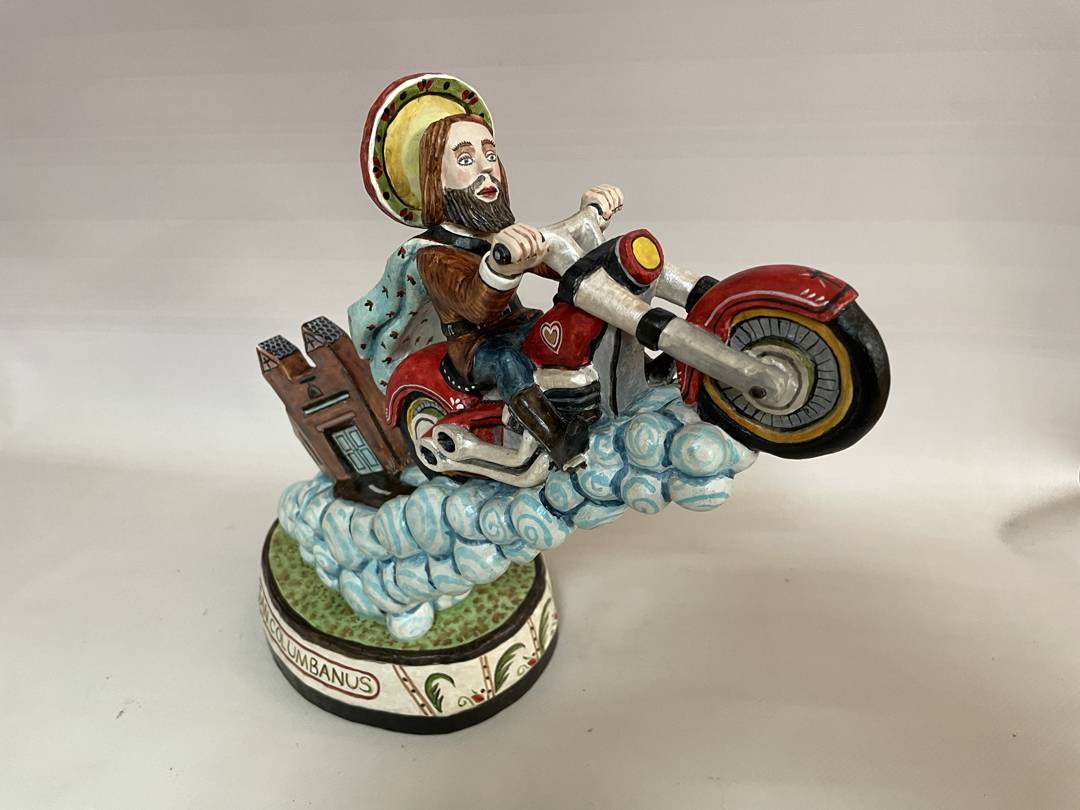
SANTA FE—Last summer, artist Gustavo Victor Goler brought a hand-carved bulto to the 2024 Traditional Spanish Market that turned heads: Saint Columbanus, Patron Saint of Motorcycle Riders, a haloed santo riding a red motorcycle up a ramp of clouds. Goler unveiled the piece at the Friday night gala, a preview showcase meant to spotlight standout pieces before the market opened the next day. The reception from some of his peers was chilly. “They told me I should have taken it to the [unaffiliated] Contemporary Hispanic Market instead,” Goler recalls. “And I only had that one contemporary piece—it’s not like I filled my table with them.”
That reaction reflected broader changes reshaping Spanish Market. In 2023, after more than seventy years under the Spanish Colonial Arts Society, stewardship of the market transferred to the Atrisco Heritage Foundation—a branch of the New Mexico–based Atrisco Companies, a “family” of social enterprises rooted in community-centered cultural preservation and economic development.
Among the changes made during this transition of leadership was the quiet elimination of the “Innovations within Tradition” art category from the market guidelines. First introduced in 2010 under the name “Modern Expressions,” the category had long served as a haven for Spanish Market artists exploring more experimental expressions within the traditional framework of Hispano art.
The contemporary category’s invention—and now its removal—have both sparked discourse among artists and organizers, centered on the persistent tension between cultural preservation and artistic evolution. Their vigorous debate raises broader questions about artistic freedom, tradition, and the role of institutions in shaping both.
To understand how those tensions are playing out, I spoke with three key figures: Goler, a celebrated santero who continues to participate in the market; Arthur López, an award-winning artist who has stepped away for the second year in a row; and Brian O’Connell, chief operating and financial officer of the Atrisco Companies, who helped guide the transition. Together, their perspectives offer a window into the deeper conversation surrounding the nuanced role of artistic heritage at Spanish Market.
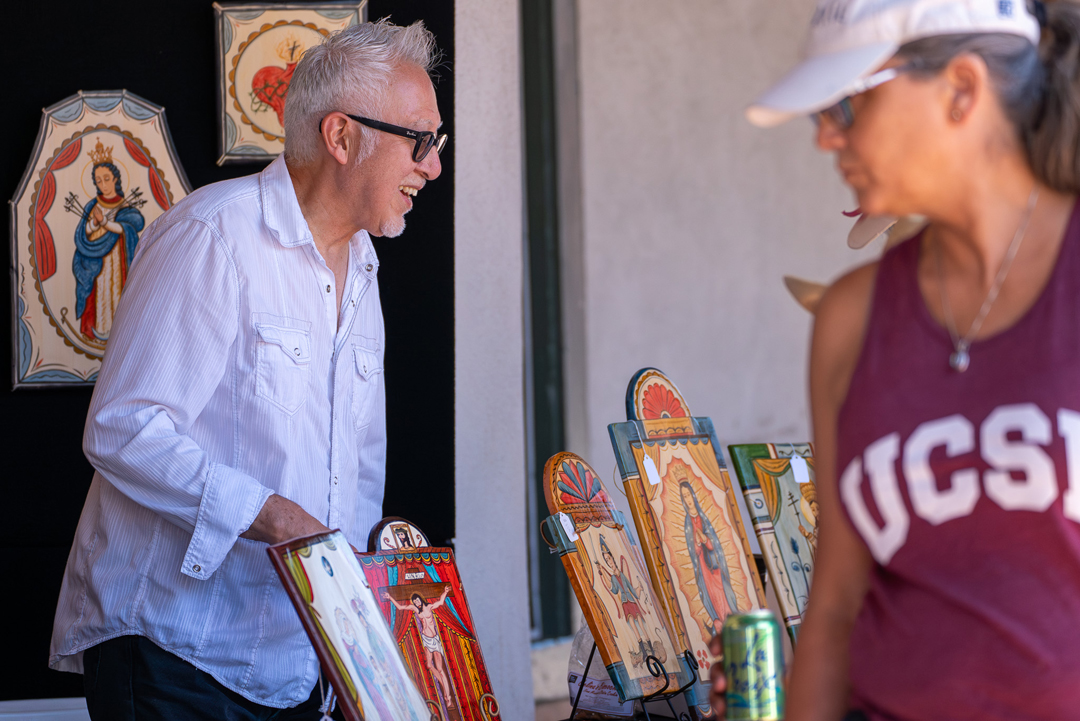
Goler has been showing at Spanish Market for more than thirty years. A master santero known for his hand-carved retablos, bultos, and stone lithography, he is no stranger to pushing artistic boundaries and being recognized for it. Among other awards, he is a recipient of the Spanish Colonial Arts Society’s Masters Award for Lifetime Achievement in 2016 and first place in the now-absent “Innovations within Tradition” category in 2019.
As someone who’s witnessed the Market’s evolution firsthand, Goler sees the current moment as part of a familiar cycle. “Historically, many artists have used Spanish Market as a stepping stone,” he says. “Then they feel it is too restrictive and move on. This isn’t anything new.”
What is new, he noted, is the way the removal of the “Innovations within Tradition” category affects both content and continuity. “For those of us who are dependent on our artwork for [financial] sustainability, and want to broaden what we do, it hurts a little bit to not be able to show this kind of work,” he said. For over a decade, artists such as Goler, López, and Vicente Telles have developed a collector base for devotional works that balanced traditional reverence with contemporary themes. They say losing that platform has limited artistic expression and disrupted long-standing relationships with audiences who connected with the innovative work.
For artists who are still developing their style, sticking to traditional doesn’t always work for them.
That disruption, Goler fears, will hit younger artists hardest. “I think it discourages some of the younger artists in particular,” he said. “For artists who are still developing their style, sticking to traditional doesn’t always work for them. They’ll feel the restraints a little more.” With many veteran participants aging out, he worries that the event’s future depends on welcoming new voices, not narrowing the definition of what belongs. “Incoming young artists who want to follow the contemporary style may think twice about jurying into the market.”
Aware of the need to better engage and support youth artists, Atrisco has stepped up efforts this year, including raising the youth artist age cap from eighteen to twenty. This change gives emerging talents more time to work with mentors, take advantage of reduced booth fees, and prepare for the more rigorous jurying process of the adult market. While youth artist participation has seen a notable increase this year—up to thirty-eight from around thirty the year before—adult participation has not followed the same upward trend. One absence, in particular, stands out.
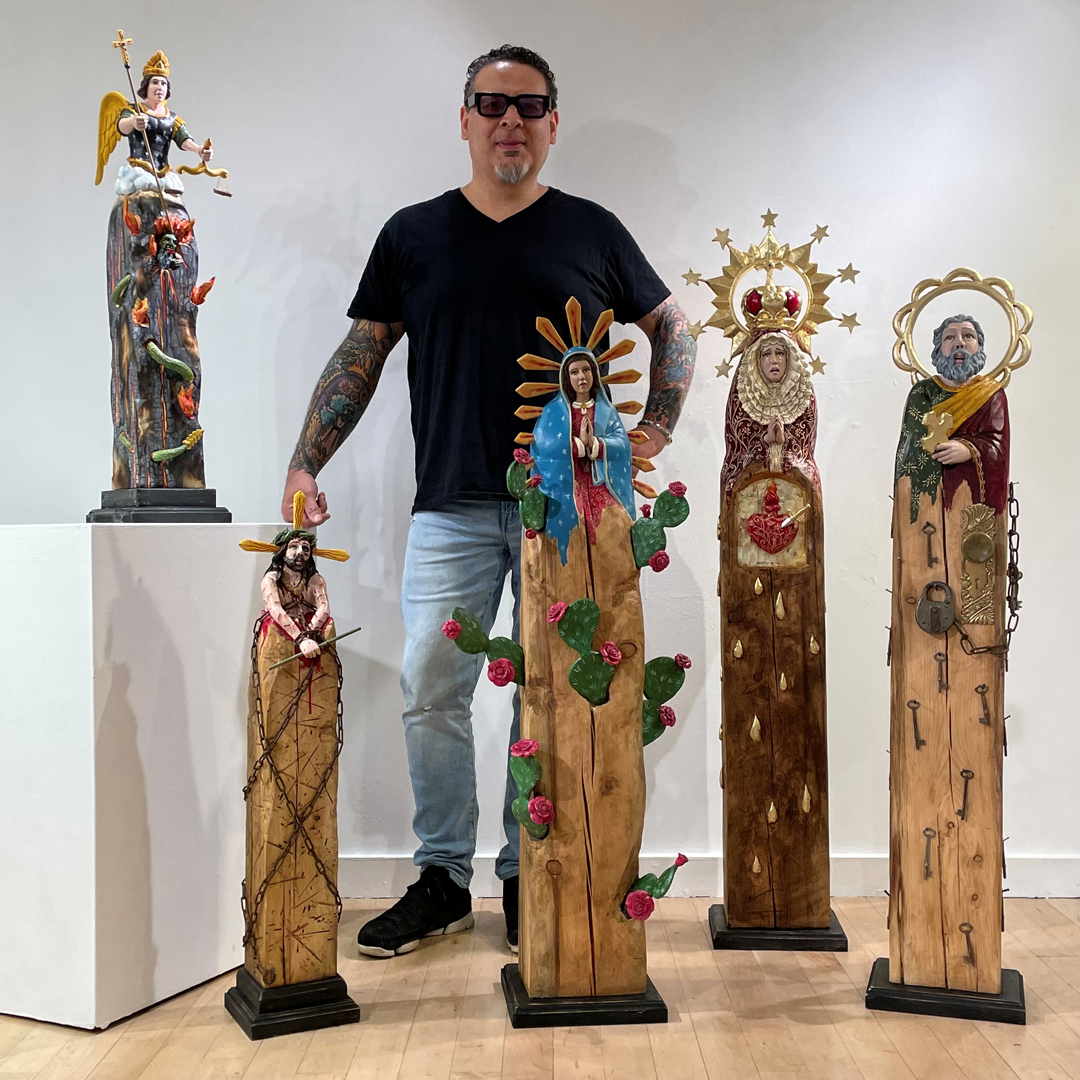
Arthur López, a santero known for blending traditional processes and devotional themes with sharp contemporary sensibilities, earned three Spanish Market awards in 2017, including best in category for “Innovations within Tradition.” Since 2023, when the category was removed, López hasn’t participated—not because he lost interest, but because he no longer sees space for the kind of work he and others helped legitimize.
López says Atrisco ignored artists’ concerns about the decision. “They basically said, comply or get out. I chose to vote with my legs.”
López, unlike Atrisco, has long been involved in this debate. He was among the cohort who helped establish the innovative category when it debuted in 2010. At the time, it was seen as a bold move for an event long distinguished by its emphasis on historical fidelity. “It was new and exciting for Spanish Market, which had always been traditional,” López said.
For the big fish in this small pond, there’s nowhere to go.
By the late 2010s, the category had gained momentum, and López believes it played a key role in renewing interest in the Market. “Before the category was introduced, the crowd size had been dwindling for years,” he recalled. “It was starting to revive the market again.” He remembers a time when the event featured upwards of 250 adult artists. “Now, it’s shrinking, and there aren’t enough artists striving to be creative and original. They’re too afraid to, and yet people wonder why the market has grown so stagnant.”
His observation tracks with recent participation numbers: in 2019, over 200 artists took part in the Spanish Market. Last year, that number dropped to 155, including both adult and youth artists, and this year, just 143 are currently registered.
As López sees it, eliminating the category sends a discouraging message that risk and originality have no place in a space that once welcomed creative growth. Without room for change, he warns, Spanish Market risks becoming a closed loop. “Right now, there’s no incentive for artists to continue participating. When you’ve been there and done that, there’s nothing more for you. For the big fish in this small pond, there’s nowhere to go.”
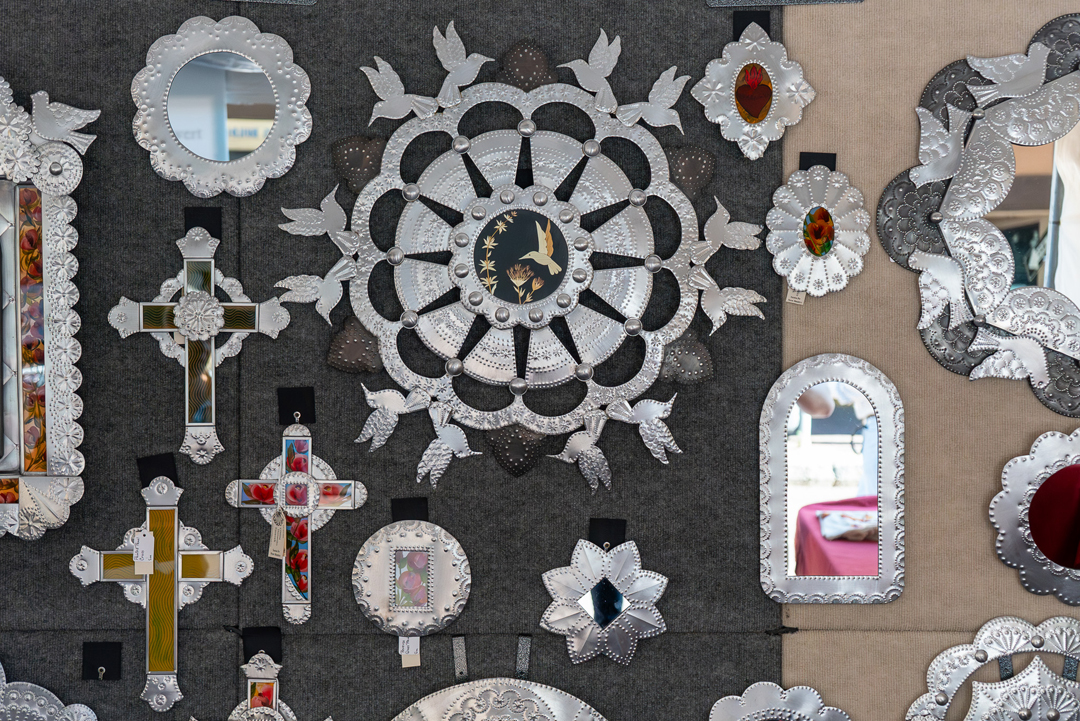
When Atrisco assumed stewardship of Spanish Market in 2023, chief operating and financial officer Brian O’Connell emphasized that their top priority was delivering an event that artists, collectors, and the public could trust to display high-quality artwork. This quality-first approach still guides how Atrisco addresses challenges facing the Market.
“When reinstalling the screening and jurying processes, we spent a lot of time focusing on the expectations the artists had for the market, and one another, to make sure the quality stayed high and that we were presenting a cohesive statement of these traditional Spanish art forms,” O’Connell said.
To that end, Atrisco used what they refer to as the 2022 guidelines, which, according to O’Connell, are the most recent version provided by participating artists. But López claims otherwise.
Since its start, Spanish Market has been a special place because of its focus on traditional art forms.
“The guidelines currently in use are from a 2020 draft that was never voted on and never approved,” López says. “A small group of ‘squeaky-wheel’ artists who didn’t represent everyone wanted to change the guidelines by removing this category, and they went ahead and did it when Atrisco acquired the market.”
While the behind-the-scenes details remain contested, what’s certain is that the current guidelines exclude any specific mention of the “Innovations within Tradition” category. O’Connell maintains that Atrisco’s goal is not to limit expression, but to build on what made the Market distinct in the first place.
“Since its start, Spanish Market has been a special place because of its focus on traditional art forms,” he says. “If we progress too far away from that, the market may become similar in scope and tone to other opportunities in the landscape.”
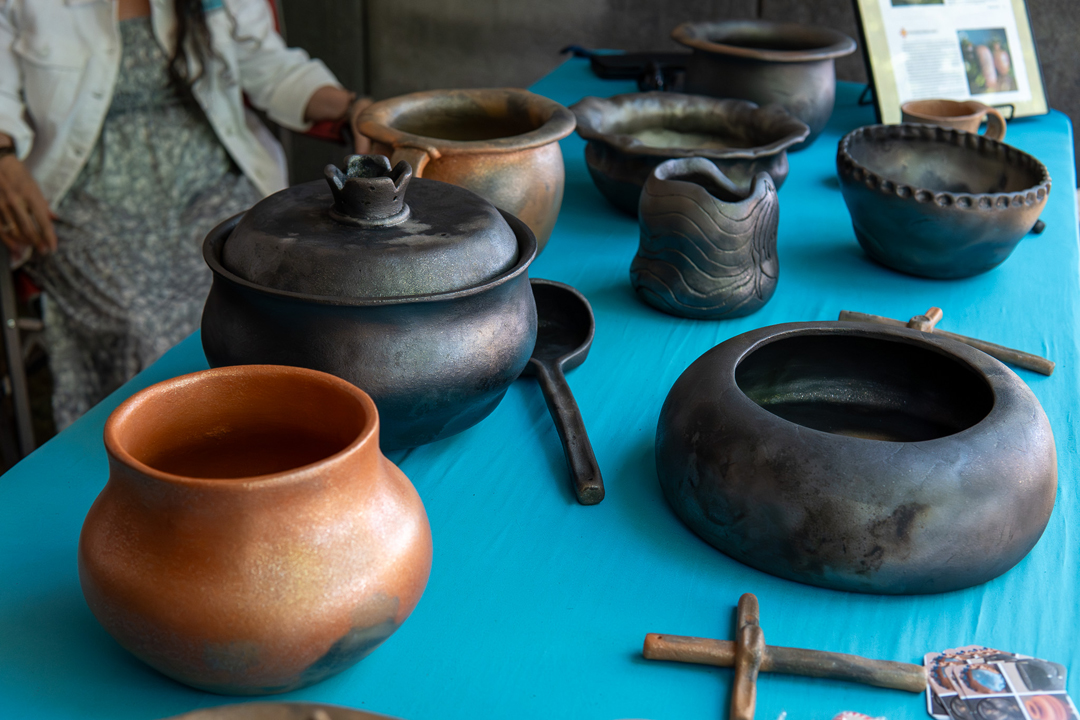
Another key component of this ecosystem is the Contemporary Hispanic Market, a separate event founded in 1986 and held in Santa Fe on the same weekend as the Traditional Spanish Market. While entirely separate in governance, the event’s overlap in form and audience underscores the need to preserve what makes the Traditional Market distinct, even as it adapts to an evolving cultural landscape.
Recognizing this delicate balance, O’Connell stressed that a central part of Atrisco’s role is actively and attentively listening to the artists themselves. “Continuing to be artist-led and artist-informed on the presentation of traditional Spanish Market art is the main challenge we have to stay focused on. We’re newcomers to the work and the community, and to some extent, Santa Fe,” he says. “This is an important discussion that we have the time and space for.”
There has to be more open conversation with the entire body of artists, not just a small group.
Ultimately, O’Connell says Atrisco’s long view is about stewardship, not control. “We want the artists to make their art and inspire themselves and challenge themselves,” he says. “Our role is to focus on what makes the market competitive and sustainable in a crowded environment of other opportunities.” He argues that this means preserving what makes the event singular, while still asking: how expansive can Spanish Market be, while remaining true to what makes it special?
For an event as storied as Santa Fe’s Spanish Market, complete consensus may never be possible. But for artists like López and Goler, the hope isn’t for agreement so much as acknowledgment. As López puts it, “There has to be more open conversation with the entire body of artists, not just a small group. We need to come together to forge a path for the future.”
The removal of a single art category may seem minor from the outside. But inside the community, it has inspired deeper questions about cultural identity, artistic evolution, and the shifting boundaries of tradition. Those questions don’t come with easy answers. They call for space, reflection, and communal exchange that unfolds through the hands of the artists, the decisions of organizers, and the eyes of those who come to see what traditional Hispano art looks like today.
The Traditional Spanish Market is scheduled for July 26 and 27, 2025, from 8 am to 5 pm on the Santa Fe Plaza. Arthur López is showing new works in an exhibition titled Sideshow Saints, opening July 5 from 5 to 7 pm at King Galleries in Santa Fe.
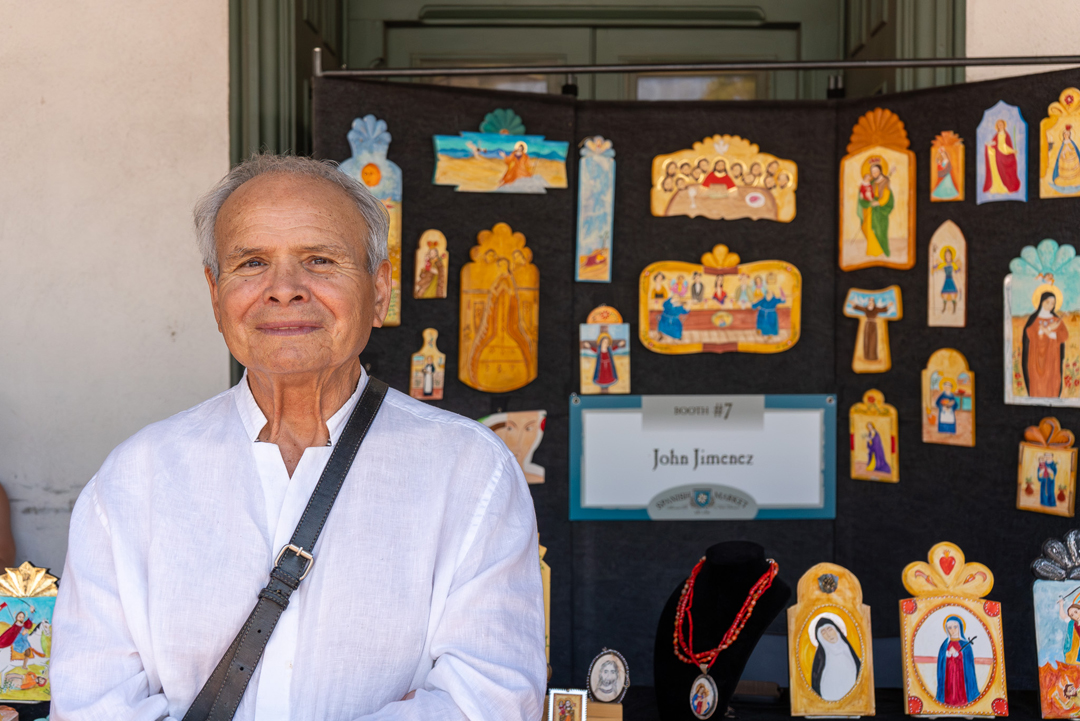
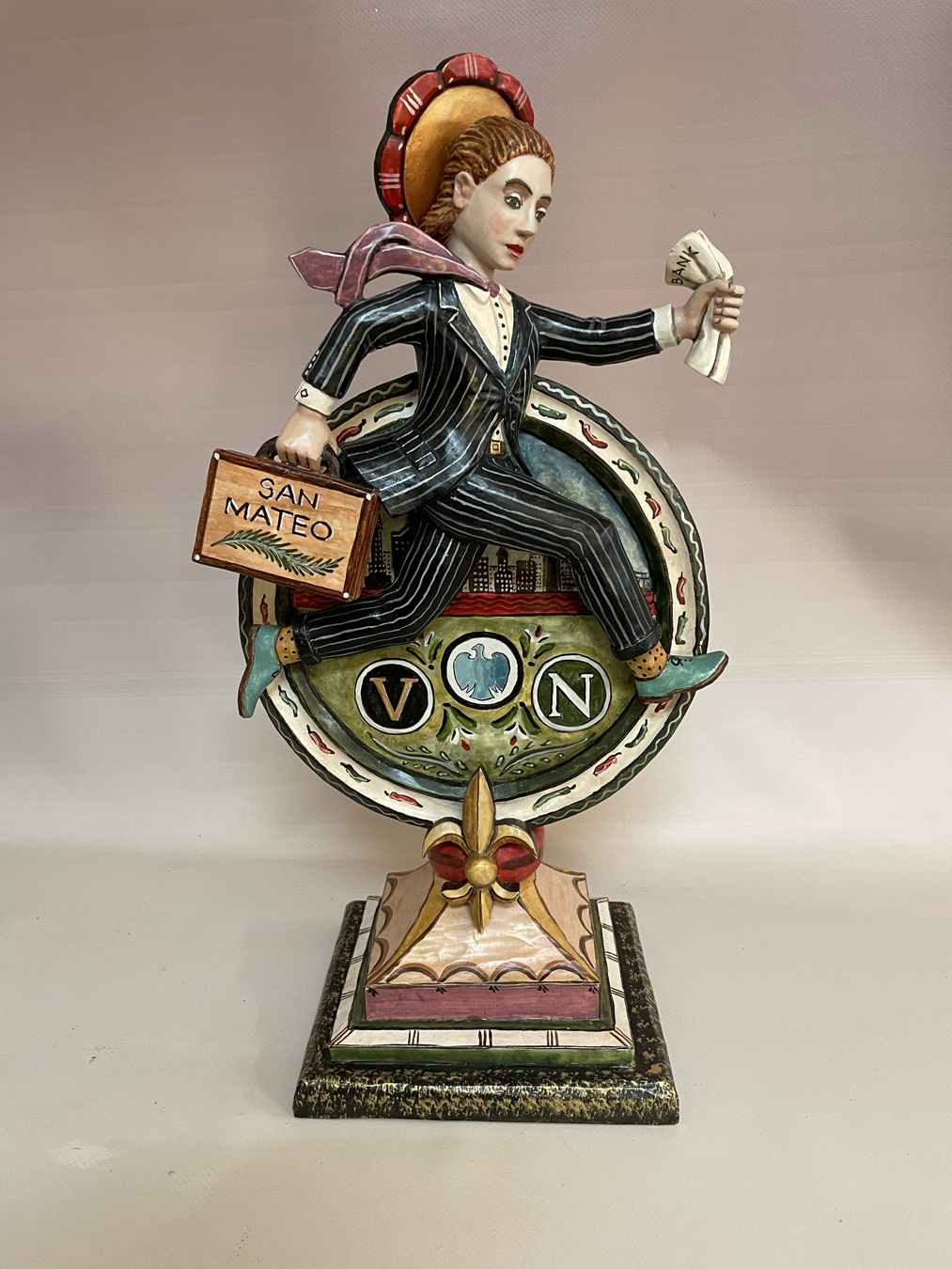
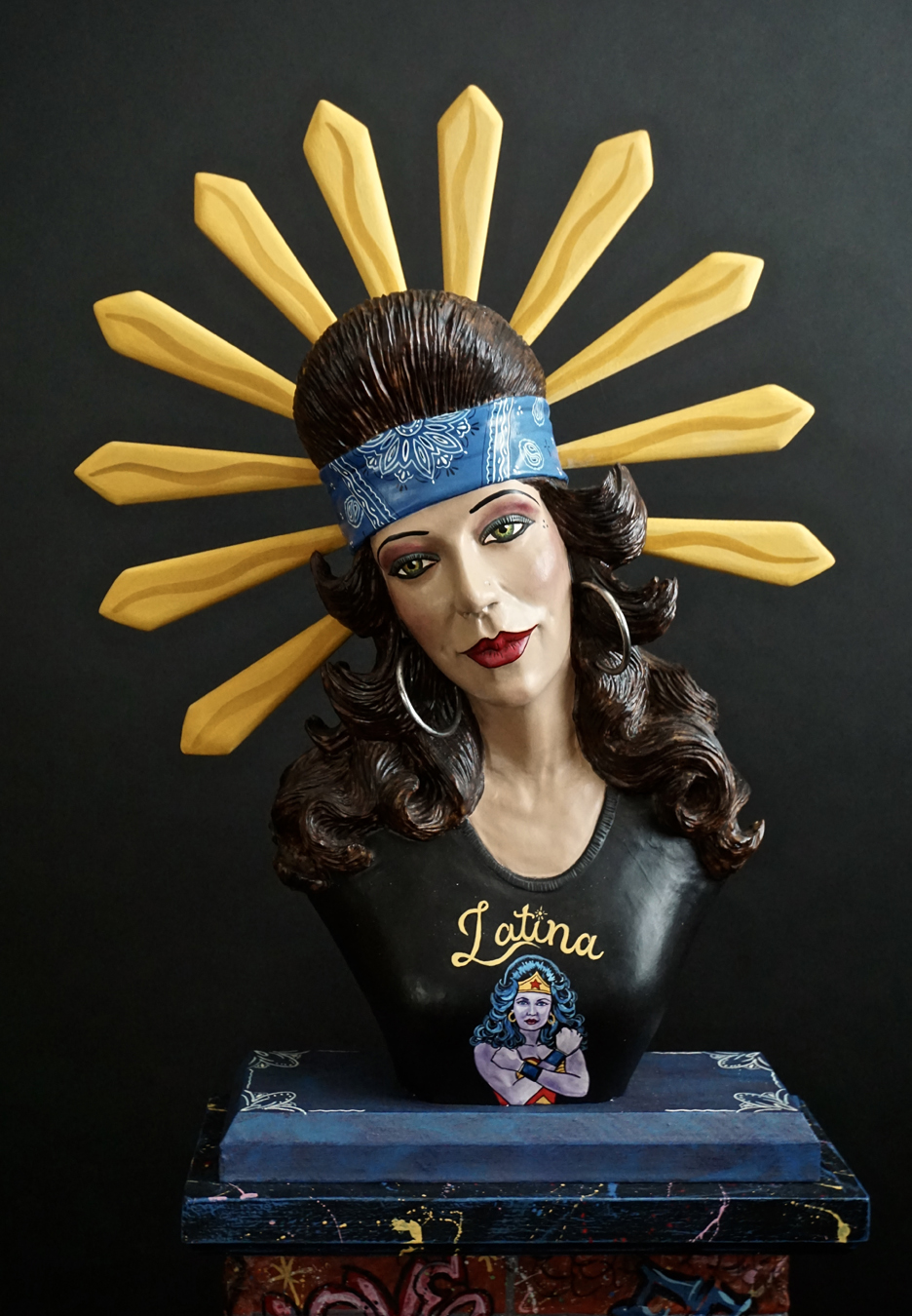
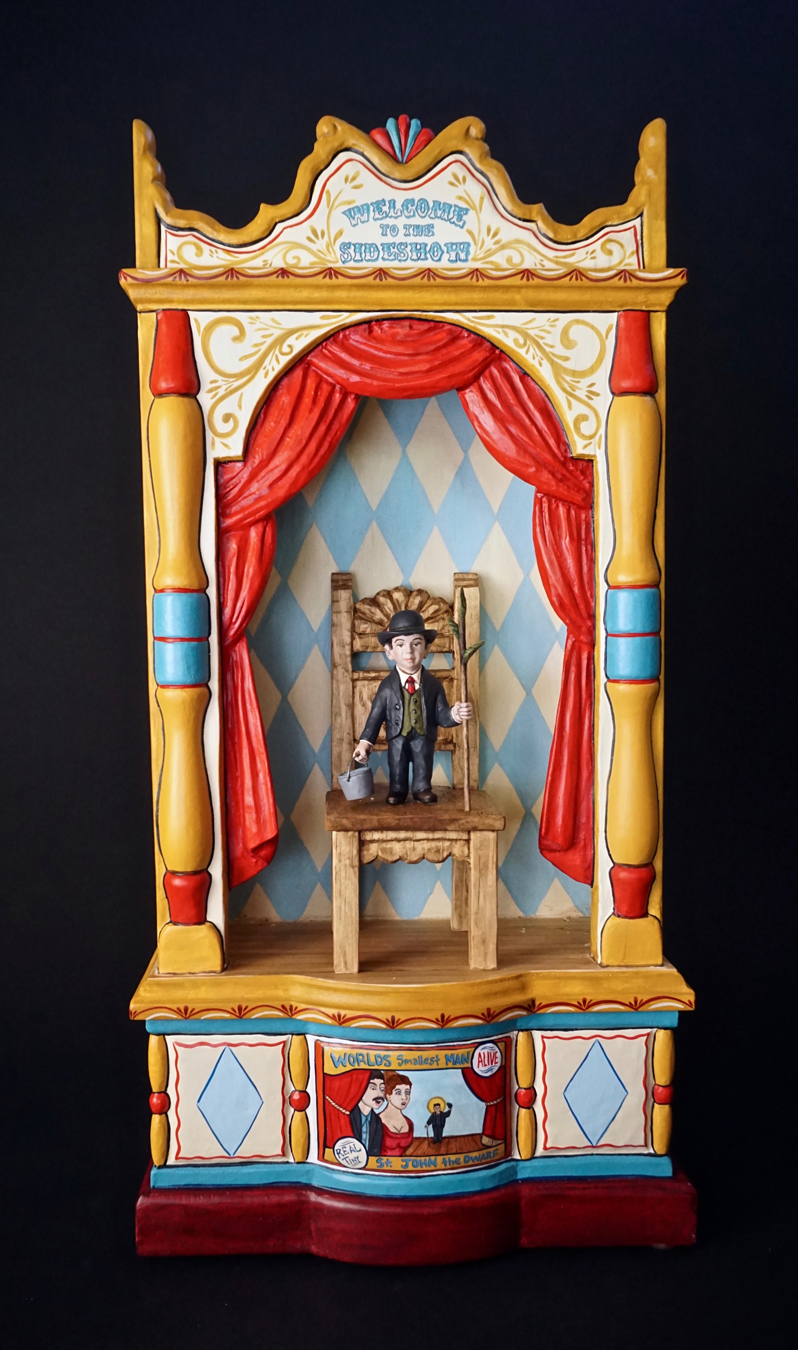
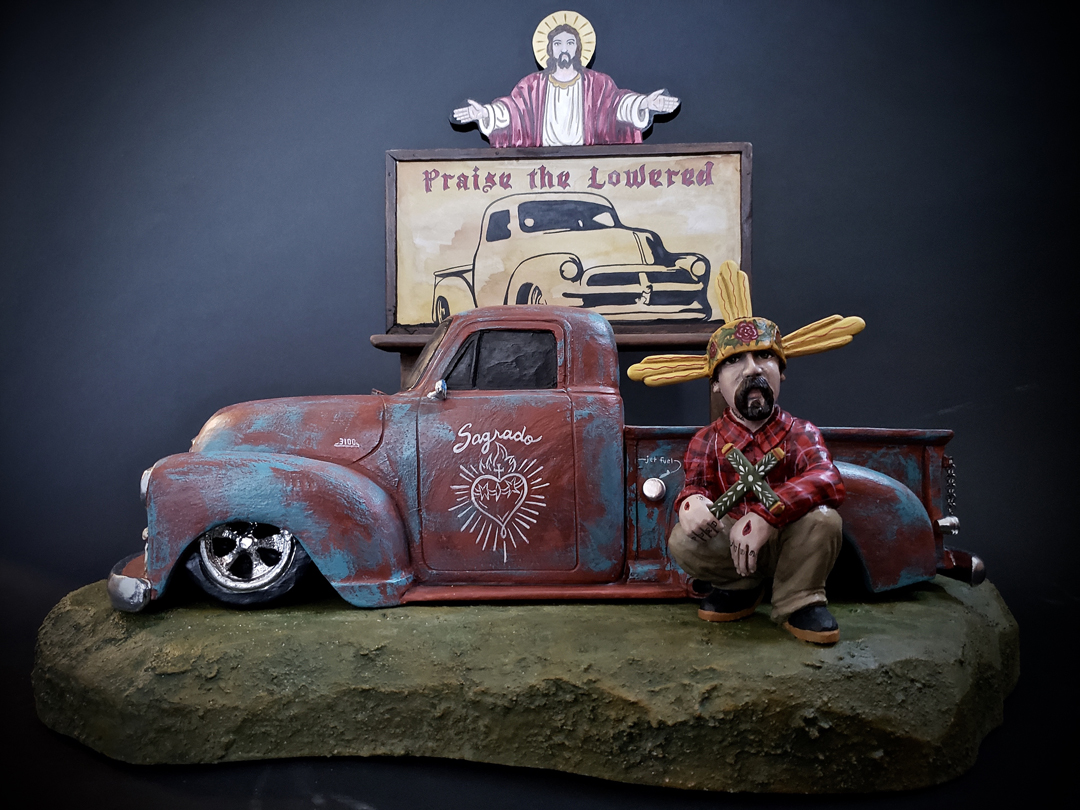
Arthur López, Praise the Lowered, 2025, hand-carved and painted wood, natural and water-based pigments. Photo: King Galleries. Courtesy the artist.
Correction 07/22/25: An earlier version of this article stated that Contemporary Hispanic Market, which is unaffiliated with Traditional Spanish Market, was founded in 2006. It actually started in 1986, celebrating its 39th year in 2025.

